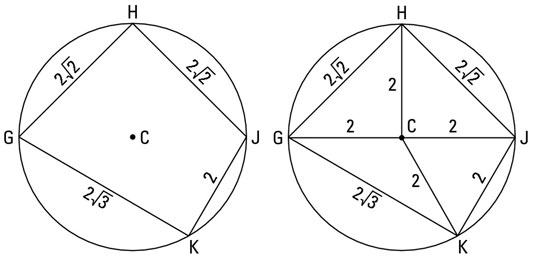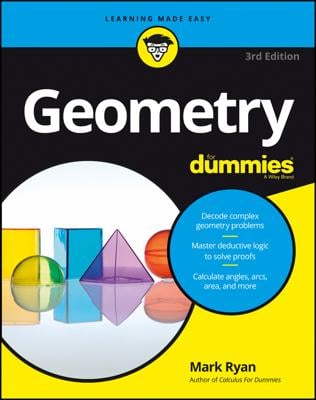When buying a home, the three most important things to consider are location, location, location. With circles, it’s radii, radii, radii. In circle problems, you often need to add extra radii and partial radii to create right triangles or isosceles triangles that you can then use to solve the problem. Here’s what you do in greater detail:
-
Draw additional radii on the figure. You should draw radii to points where something else intersects or touches the circle, as opposed to just any old point on the circle.
-
Open your eyes and notice all the radii — including new ones you’ve drawn — and mark them all congruent. For some reason — even though all radii are congruent is one of the simplest theorems in geometry — people frequently either fail to notice all the radii in a problem or fail to note that they’re congruent.
-
Draw in the segment (part of a radius) that goes from the center of a circle to a chord and that’s perpendicular to the chord. This segment bisects the chord.

Now check out the following problem: Find the area of inscribed quadrilateral GHJK shown on the left. The circle has a radius of 2.
To solve this problem, the first thing to do is draw in the four radii to the four vertices of the quadrilateral as shown in the figure on the right.
Now you simply need to find the area of the individual triangles. You can see that triangle JKC is equilateral, so you can use the equilateral triangle formula for this one:
And if you’re on the ball, you should recognize triangles GHC and HJC.
You already know the base and height of these two triangles, so getting their areas should be a snap. For each triangle,
Now draw the altitude (a partial radius) of triangle KGC from C to segment GK.

Now just add ’em up:


